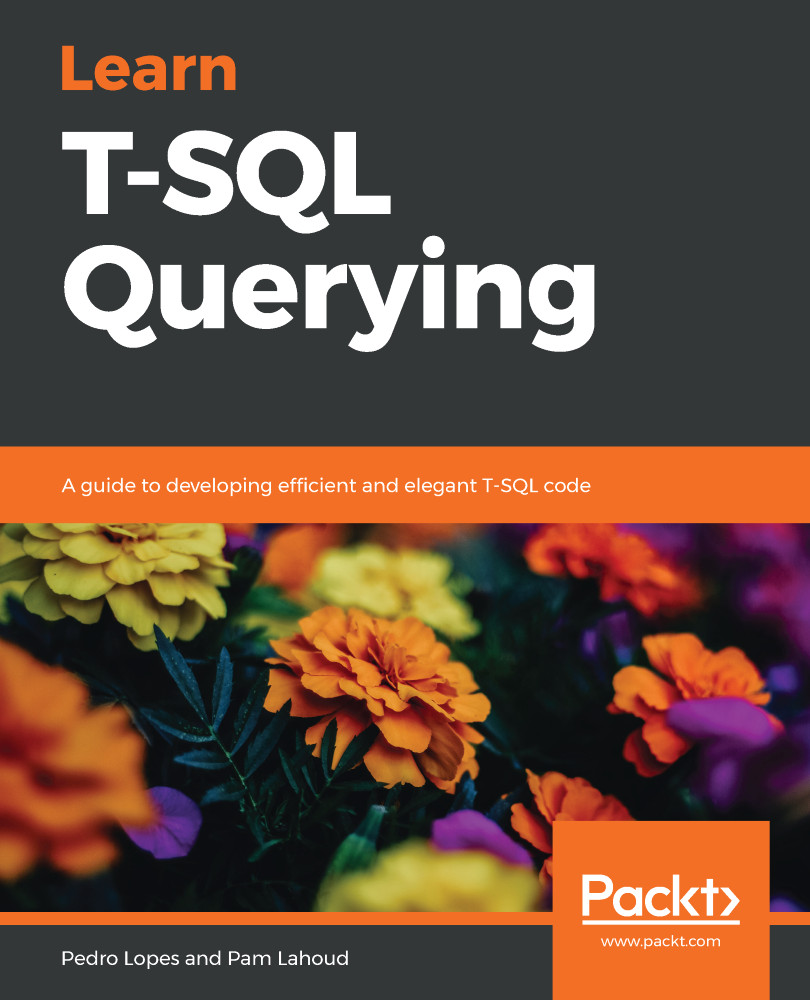Now that we have learned the basics of writing T-SQL queries and how SQL Server interprets them, the next logical step is to understand how SQL Server processes and ultimately executes the query. The Query Processor includes query compilation, query optimization, and query execution essentials; how does SQL Server compile an incoming T-SQL statement? How does SQL Server optimize and execute a T-SQL statement? How does SQL Server use parameters? Are parameters an advantage? Why does a SQL Server cache execution plans for certain T-SQL statements but not others? When is that an advantage and when is it a problem? This is information that any T-SQL practitioner needs to keep as reference for proactive T-SQL query writing, as well as reactive troubleshooting and optimization purposes. This chapter will be referenced throughout all chapters, as we bridge...
-
Book Overview & Buying

-
Table Of Contents

Learn T-SQL Querying
By :

Learn T-SQL Querying
By:
Overview of this book
Transact-SQL (T-SQL) is Microsoft's proprietary extension to the SQL language used with Microsoft SQL Server and Azure SQL Database. This book will be a usefu to learning the art of writing efficient T-SQL code in modern SQL Server versions as well as the Azure SQL Database.
The book will get you started with query processing fundamentals to help you write powerful, performant T-SQL queries. You will then focus on query execution plans and leverage them for troubleshooting. In later chapters, you will explain how to identify various T-SQL patterns and anti-patterns. This will help you analyze execution plans to gain insights into current performance, and determine whether or not a query is scalable. You will also build diagnostic queries using dynamic management views (DMVs) and dynamic management functions (DMFs) to address various challenges in T-SQL execution. Next, you will work with the built-in tools of SQL Server to shorten the time taken to address query performance and scalability issues. In the concluding chapters, this will guide you through implementing various features, such as Extended Events, Query Store, and Query Tuning Assistant, using hands-on examples.
By the end of the book, you will have developed the skills to determine query performance bottlenecks, avoid pitfalls, and discover the anti-patterns in use.
Table of Contents (18 chapters)
Preface
Anatomy of a Query
Understanding Query Processing
Mechanics of the Query Optimizer
Section 2: Dos and Donts of T-SQL
Exploring Query Execution Plans
Writing Elegant T-SQL Queries
Easily-Identified T-SQL Anti-Patterns
Discovering T-SQL Anti-Patterns in Depth
Section 3: Assemble Your Query Troubleshooting Toolbox
Building Diagnostic Queries Using DMVs and DMFs
Building XEvent Profiler Traces
Comparative Analysis of Query Plans
Tracking Performance History with Query Store
Troubleshooting Live Queries
Managing Optimizer Changes with the Query Tuning Assistant
Other Books You May Enjoy


